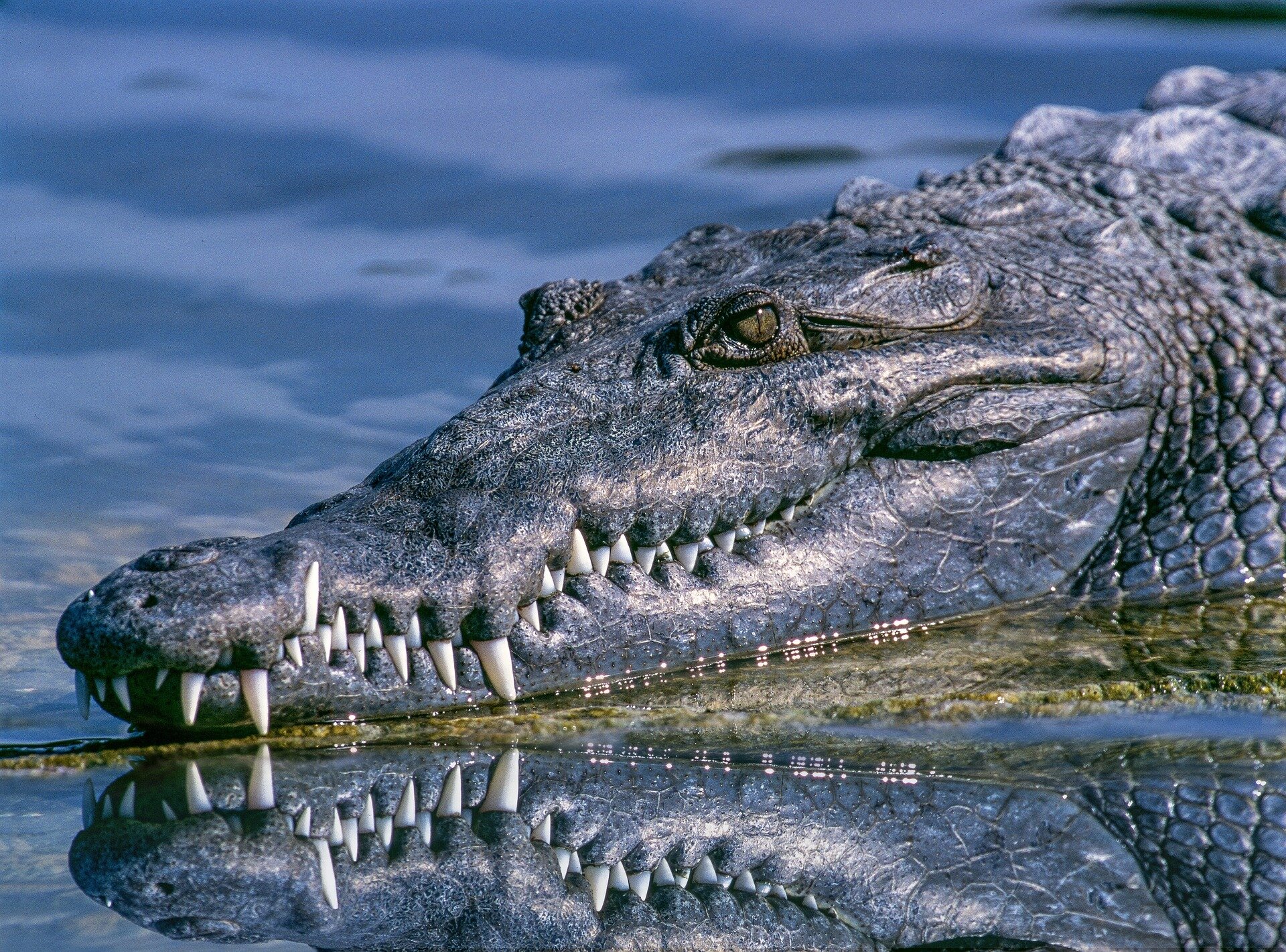An international team of paleobiologists have found that the sinuses of ocean-dwelling relatives of modern-day crocodiles prevented them from evolving into deep divers like whales and dolphins.
A new paper published today in Royal Society Open Science suggests that thalattosuchians, which lived at the time of the dinosaurs, were stopped from exploring the deep due to their large snout sinuses.
Whales and dolphins (cetaceans) evolved from land-dwelling mammals to become fully aquatic over the course of around 10 million years. During this time, their bone-enclosed sinuses reduced and they developed sinuses and air sacs outside of their skulls.
This would have alleviated increases in pressure during deeper dives, allowing them to reach depths of hundreds (dolphins) and thousands (whales) of meters without damaging their skulls.
Thalattosuchians lived during the Jurassic and Cretaceous periods and fall into two main groups. Teleosauridae were similar to modern day gharial crocodiles, likely living in coastal waters and estuaries. Metriorhynchidae, on the other hand, were more fully adapted to life at sea, with streamlined bodies, flipper-like limbs and tail fins, among other marine adaptations.
Researchers from the University of Southampton, University of Edinburgh, and other institutions wanted to see if thalattosuchians had made similar sinus adaptations to whales and dolphins in their evolutionary journey from the land to the sea.
The team used computed tomography (a special kind of scan) to measure the sinuses of 11 thalattosuchian skulls, as well as the skulls of 14 modern crocodile species and six other fossil species.
Sinus changes
They found that braincase sinuses decreased across thalattosuchian evolution as the animals became more aquatic, similar to those of whales and dolphins. The team thinks this is likely due to reasons relating to buoyancy, diving and feeding.
But the team also found that once thalattosuchians became fully aquatic, their snout sinuses expanded compared to their ancestors.
“The regression of braincase sinuses in thalattosuchians mirrors that of cetaceans, reducing during their semi-aquatic phases and then diminishing further as they became fully aquatic,” explains Dr. Mark Young, lead author of the paper from the University of Southampton.
“Both groups also developed extracranial sinuses. But whereas the cetacean’s sinus system aids pressure regulation around the skull during deep dives, the expansive snout sinus systems of metriorhynchids precluded it from diving deeply.
“That’s because at greater depths, air within the sinuses would compress, causing discomfort, damage, or even collapse in the snout due to its inability to withstand or equalize the increasing pressure.”
Salt glands
While whales and dolphins have highly efficient kidneys that filter out salt from sea water, seafaring reptiles and birds rely on salt glands to excrete salt from their systems.
The team believes that the larger, more complex snout sinuses of metriorhynchids may have helped to drain their salt glands, similar to those of modern marine iguanas.
“A major problem for animals with salt glands is encrustation, where the salt dries and blocks the salt excreting ducts. Modern birds shake their heads to avoid this, while marine iguanas sneeze to force the salt out,” says Dr. Young.
“We think that the expanded sinuses of metriorhynchids helped to expel excess salt. Birds, like metriorhynchids, have sinuses that exit the snout and pass under the eye and when their jaw muscles contract, it creates a bellows-like effect within their sinuses. For metriorhynchids, when the sinuses were subjected to this effect, it would have compressed the salt glands within the skull and created a sneeze-like effect, similar to modern marine iguanas.”
The study shows how major evolutionary transitions unfold and are shaped by species anatomy, biology and evolutionary history.
“It is fascinating to discover how ancient animals, such as thalattosuchians, adapted to a life in the ocean in their own unique way by showing both similarities and differences to modern day cetaceans,” says Dr. Julia Schwab, a co-author on the paper from the University of Manchester.
Dr. Young concludes, “Thalattosuchians became extinct in the Early Cretaceous period, so we’ll never know for sure if given more evolutionary time, they could have converged further with modern cetaceans, or whether the need to mechanically drain their salt glands was an impassable barrier to further aquatic specialization.”
More information:
Skull sinuses precluded extinct crocodile relatives from cetacean-style deep diving as they transitioned from land-to-sea, Royal Society Open Science (2024). DOI: 10.1098/rsos.241272. royalsocietypublishing.org/doi/10.1098/rsos.241272
Provided by
University of Southampton
Citation:
Sinuses prevented prehistoric crocodile relatives from deep diving, paleobiologists suggest (2024, October 29)
retrieved 29 October 2024
from QJU
This document is subject to copyright. Apart from any fair dealing for the purpose of private study or research, no
part may be reproduced without the written permission. The content is provided for information purposes only.
